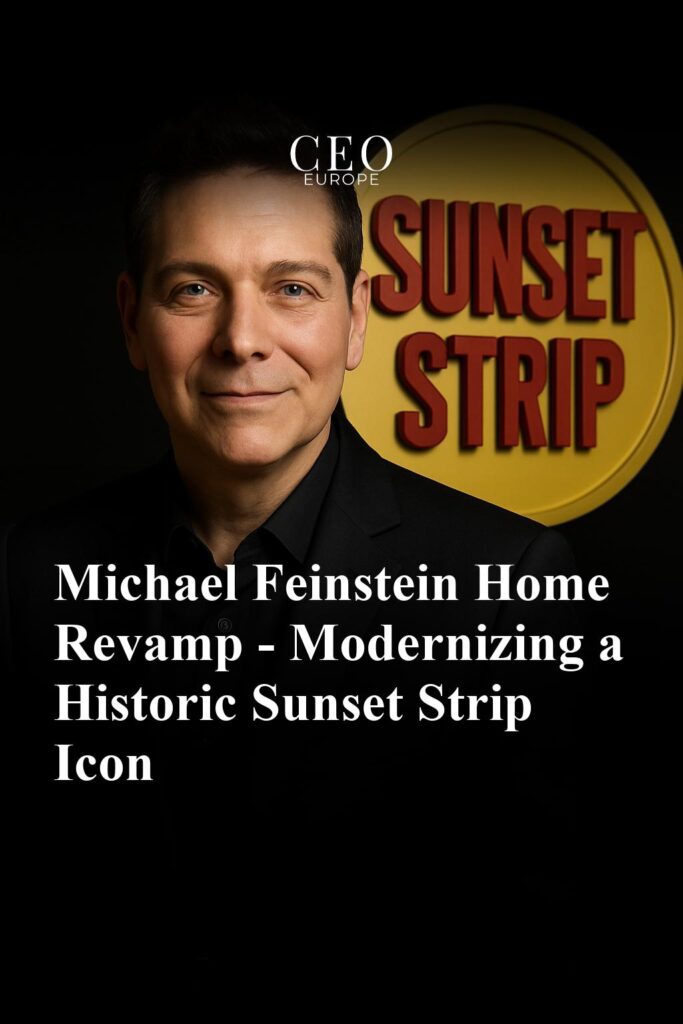1. Introduction
The Michael Feinstein home revamp marks a significant transformation of a cherished 1930s Spanish Revival residence perched on the iconic Sunset Strip. As a celebrated musician and historic preservation enthusiast, Feinstein’s refurbishing journey not only updates this classic property but also highlights the enduring appeal of Sunset Strip real estate. His thoughtful renovation balances modern luxury with the home’s architectural heritage, showcasing how historic homes can be revitalized for today’s lifestyle. This project spotlights the growing trend among homeowners who seek to preserve the charm of vintage builds while integrating contemporary amenities, reinforcing the cultural value and real estate prestige of these storied properties.
2. Background
Built in the 1930s, the home embodies the distinctive Spanish Revival architecture that characterizes much of the Sunset Strip’s historic charm. Before Michael Feinstein’s revamp, the residence retained many original features, such as stucco walls, wrought iron accents, and arched doorways, typical of this style. Feinstein, known for his deep musical and cultural ties to Los Angeles, acquired the home with a vision to honor its heritage while making it suitable for modern living. This connection imbues the property with a unique cultural importance, blending Hollywood’s Golden Age glamour with today’s artistic sensibilities. In essence, the house acts as a bridge between eras, akin to a well-preserved vinyl record played on a state-of-the-art sound system—respecting the past but enhanced for the present.
3. Trends
Current trends in 1930s home renovations focus heavily on maintaining the original Spanish Revival architecture’s integrity while introducing modern comforts. Homeowners are increasingly drawn to features like open floor plans, eco-friendly systems, and high-end finishes that enhance usability without compromising historic aesthetics. The Michael Feinstein home revamp reflects these trends by integrating luxurious touches such as rich hardwood floors and expansive ceilings while preserving period details. Meanwhile, Sunset Strip real estate continues to attract celebrities and discerning buyers seeking a blend of privacy, history, and city views—further spiking demand in this coveted market. This growing appetite mirrors a broader trend of appreciating architectural heritage as a lifestyle statement, aligning cultural respect with cutting-edge design [1].
4. Insights
Feinstein’s modernized home stands out with key features like soaring ceilings and beautifully restored hardwood floors that amplify the spaciousness and warmth. The design marries luxury and comfort, focusing on areas intended for both intimate gatherings and grand entertaining. A standout example is the media room, equipped with state-of-the-art technology, coupled with elegant outdoor spaces overlooking the city—demonstrating a seamless indoor-outdoor living concept. Renovation experts emphasize that such projects require a fine balance of craftsmanship and innovation to preserve authenticity while elevating function. Feinstein himself noted the house \”embodies an era yet lives vibrantly today,\” highlighting the care taken during the revamp. This approach elevates the property beyond a simple upgrade to an experiential home that honors tradition within a modern context [1].
5. Forecast
The Michael Feinstein home revamp may well set a precedent for future historic homes on the Sunset Strip. As urban development expands, these properties’ value can increase substantially when thoughtfully updated—potentially raising local property values as communities recognize the benefits of preservation combined with modernization. Moreover, buyer trends increasingly favor Spanish Revival architecture for its character and adaptability, promoting a renaissance in this style. Going forward, we can expect more owners to invest in maintaining historic integrity while customizing homes to fit evolving lifestyles. Such developments contribute not only to a rising real estate market but also to cultural tourism and neighborhood pride, signaling a thriving future for the Sunset Strip’s architectural heritage [2].
6. How-to
For homeowners inspired by the Michael Feinstein home revamp, a successful 1930s home renovation begins with thorough research into historical features to be retained. Prioritize preserving key architectural elements like decorative tiles, wrought iron fixtures, and original woodwork. Next, collaborate with architects and contractors experienced in Spanish Revival homes to ensure modern updates—such as electrical, plumbing, and energy efficiency—are handled sensitively. Balancing old and new requires patience and flexibility; think of the renovation akin to restoring a classic car with modern engine parts: it runs better but still carries the original’s soul. Additionally, investing in Sunset Strip real estate means considering local zoning, historical preservation rules, and market trends. For practical guidance, resources like local heritage societies and real estate experts specializing in the area can be invaluable [2]. Those interested in broader real estate strategies may find helpful insights in managing generational wealth through property as outlined in expert articles on real estate wealth management.
7. FAQ
What was the cost for Michael Feinstein’s 1930s home renovation? Feinstein purchased the property for approximately $2.7 million and updated it extensively before listing it for around $4 million, indicating significant investment in quality renovations [1].
How does the Sunset Strip real estate market currently trend? The area remains highly desirable, with rising interest from celebrities and affluent buyers who value privacy and historic homes, driving prices upward.
How can owners maintain historical integrity during renovations? Key strategies include working with preservation specialists, using period-appropriate materials when possible, and respecting original design elements.
These FAQs exemplify common curiosities surrounding historic home restorations and highlight practical considerations for potential buyers or renovators.
8. Conclusion
The Michael Feinstein home revamp illustrates how historic homes on the Sunset Strip can be transformed thoughtfully to meet modern demands without sacrificing their architectural soul. Feinstein’s project underscores the importance of preserving cultural landmarks within urban settings, ensuring they remain vibrant and relevant. The success of this renovation may inspire others to embrace similar endeavors, enriching the community’s heritage and safeguarding its unique identity. For readers passionate about home renovation or exploring Sunset Strip real estate opportunities, Feinstein’s approach offers valuable lessons in respecting the past while embracing the future.
Sources and references
1. Michael Feinstein Lists Updated 1930s Spanish Revival Home in West Hollywood for $4 Million – Robb Report
2. Explore How Baby Boomers Real Estate Wealth Shapes Generational Wealth Gaps and Impacts Millennials

